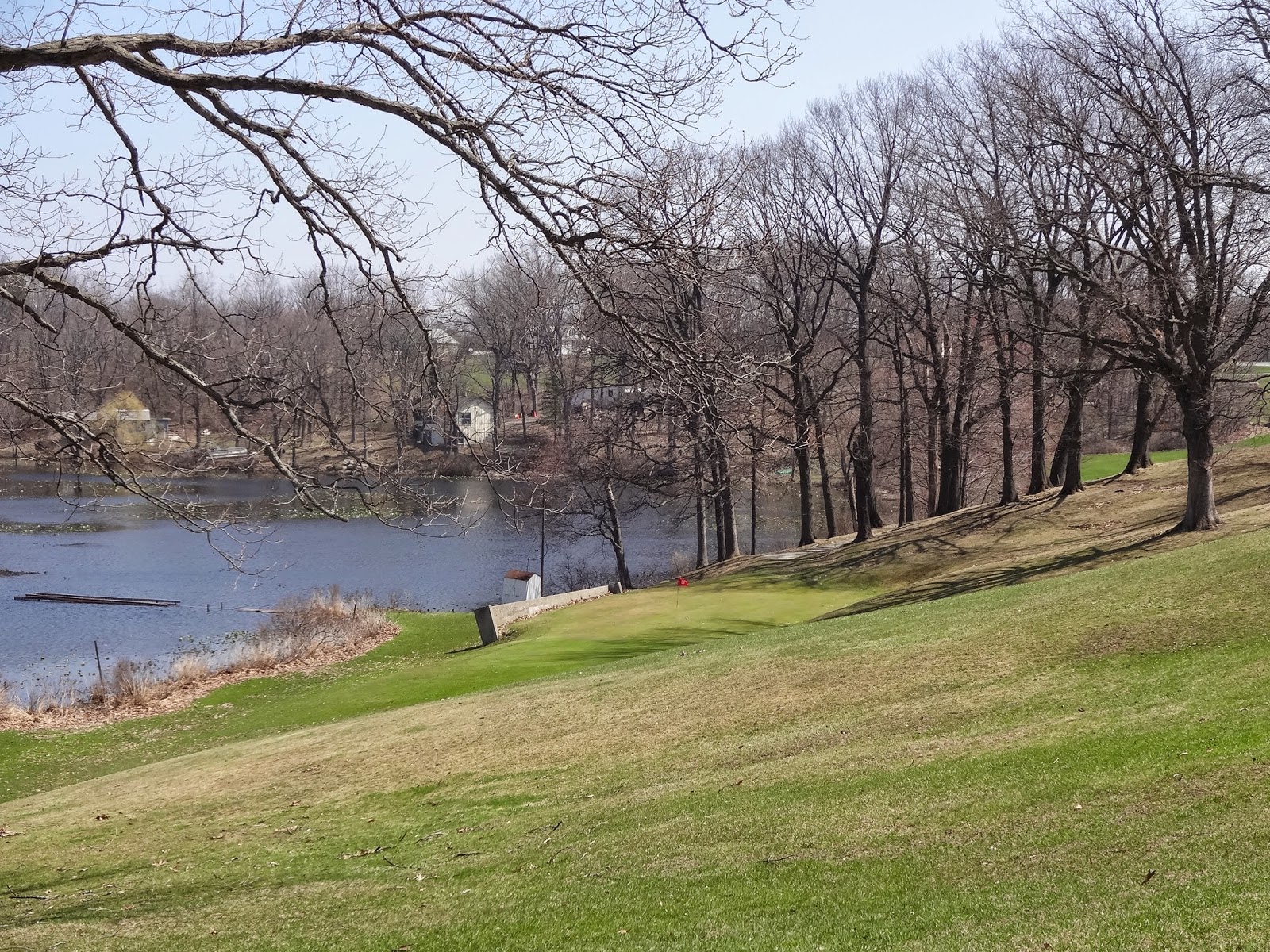I have lived in Schererville for over thirty years and I am now just discovering that Schererville sits along the old Glenwood Shoreline. A great deal of sand has been removed, so it is hard to see.
When traveling, if you approach the intersection of Indianapolis Blvd. and Route 30, you can still see the shoreline if you are looking north. South of the intersection is a hilly area that is part of the Tinley Moraine ("a geographical feature composed of materials that were deposited by a glacier. Two common types of moraine are ground moraine and end moraine"). Schoon, pgs 180, 181, 221. An end moraine is "a band of hills formed at the furthest extent of a glacial advance. A glacier may form an end moraine each time it advances and retreats." Schoon, pg. 221.
During my travels, I stopped at Teibels Restaurant at the intersection of Routes 41 and 30. I then took pictures north and south of the intersection.
Teibels Restaurant sits on the corner of Route 41 and
Indianapolis Blvd. This picture is looking south of
the intersection.
Photograph Taken By: Carol Haynes
Picture taken looking northbound from the intersection
of Route 30 and Indianapolis Blvd.
Photograph Taken By: Carol Haynes
The Tinley Moraine ventures south to 231 Hwy. I traveled on Route 41 and came to 231 Hwy which is close to Dick's Restaurant. I took pictures at this intersection of Hwy 231, which runs east and west and then took pictures north and south of the Hwy. There is also the Biesecker Prairie Nature Preserve that sits at the southeast corner of U.S. 231 and U.S. 41. The prairie sits on 34 acres of land. It is considered to be a small portion of the larger prairie that once covered western IN. It is a grass prairie on top of rolling hills. You can find little bluestem, Indian grass, prairie dock and rattlesnakes in the prairie. Also rare and endangered plants such as flax, can also be found here.
http://www.historyandtheheadlines.abc-clio.com/
This is Hwy 231 which runs east and west. The Biesecker
Prairie Nature Preserve is just south east of Hwy 231.
Photograph Taken By: Carol Haynes
Hwy 231 looking westward, just south of St. John.
Photograph Taken By: Carol Haynes
Biesecker Prairie Nature Preserve at the intersection
of Route 41 and Hwy 231
Photograph Taken By: Carol Haynes
I traveled back north to Route 30. I then went west and headed down Route 30 to get more pictures of the Glenwood Shoreline. I stopped by Meyers's Castle and took some photos there. The Meyer's Castle is a replica of a Scottish castle. It was completed in 1931. Back then, it was considered to be the most lavish mansion in the Calumet Region.
http://en.wikipedia.org/wiki/Meyer%27s-Castle.
The castle sits atop a large dune. "The sand dunes in the Dyer area were said to be 30-40 ft. high in the late 1930's. Few of these exist today." Schoon, pg. 28.
Meyers Castle sits on the Glenwood Shoreline.
It is located on Route 30 in Dyer.
Photograph Taken By: Carol Haynes
Meyers Castle sits on an ancient sand dune.
Photograph Taken By: Carol Haynes
I then ventured farther west into Glenwood Illinois. During the Glenwood Phase "lake currents and waves built up long spits, or sandy peninsulas on the down-current sides of these islands (Mt. Forest Island, Blue Island, and Glenwood Island in Cook County, Hobart Island in Lake county, and various small islands in Porter and LaPorte Counties in Indiana). The Glenwood Spit, southeast of the original Glenwood Island (and along today's Glenwood Dyer Road) now forms one of the best visible portions of the Glenwood Shoreline." Schoon, pg. 30.
Intersection of Glenwood Dyer Road
Photograph Taken By: Carol Haynes
Glenwood Dyer Road
Part of the Glenwood Shoreline
Photograph Taken By: Carol Haynes
I travel through these areas all the time, but I find it more fascinating now knowing the geological history of these areas. I will certainly look at our landscapes in the Calumet Region now with a new respect.
References: Schoon J. Kenneth, Calumet Beginnings,



























